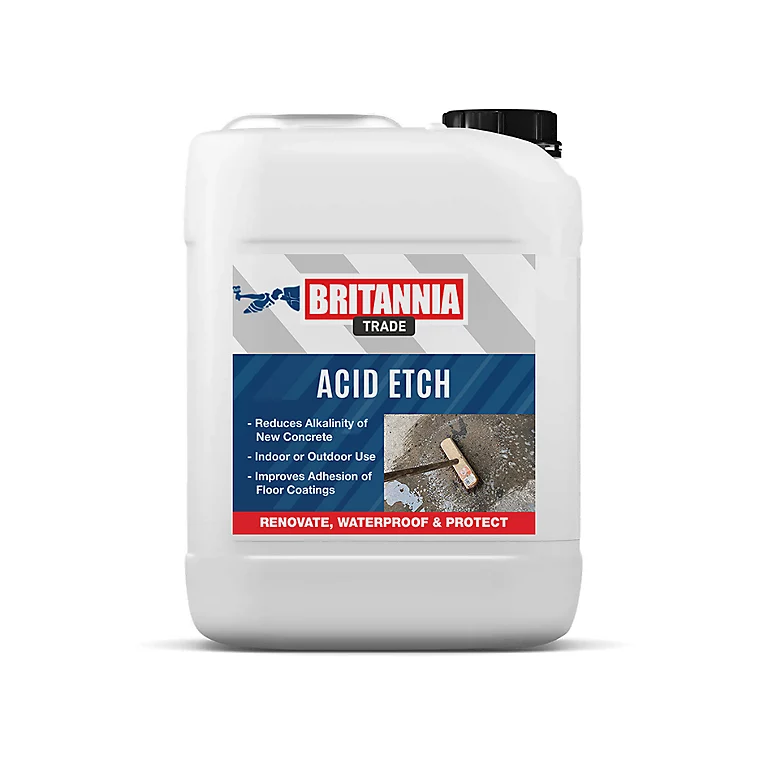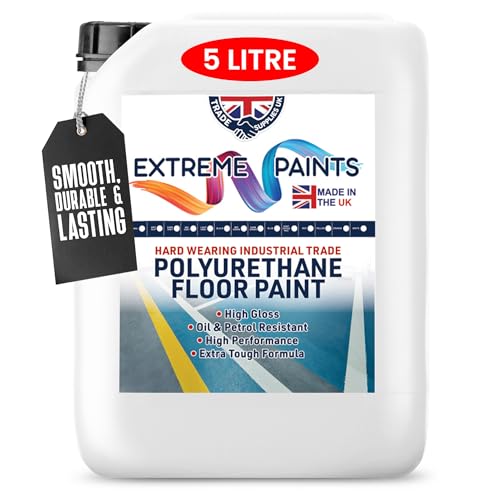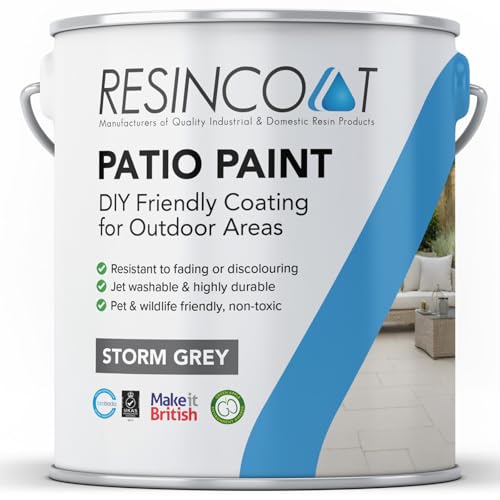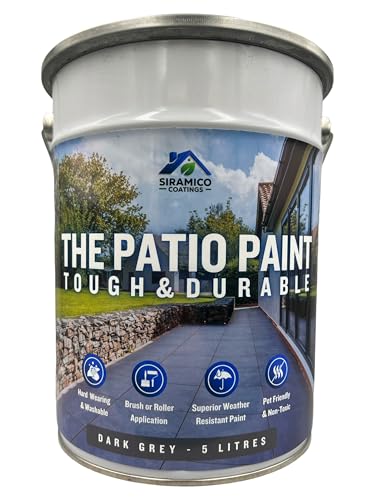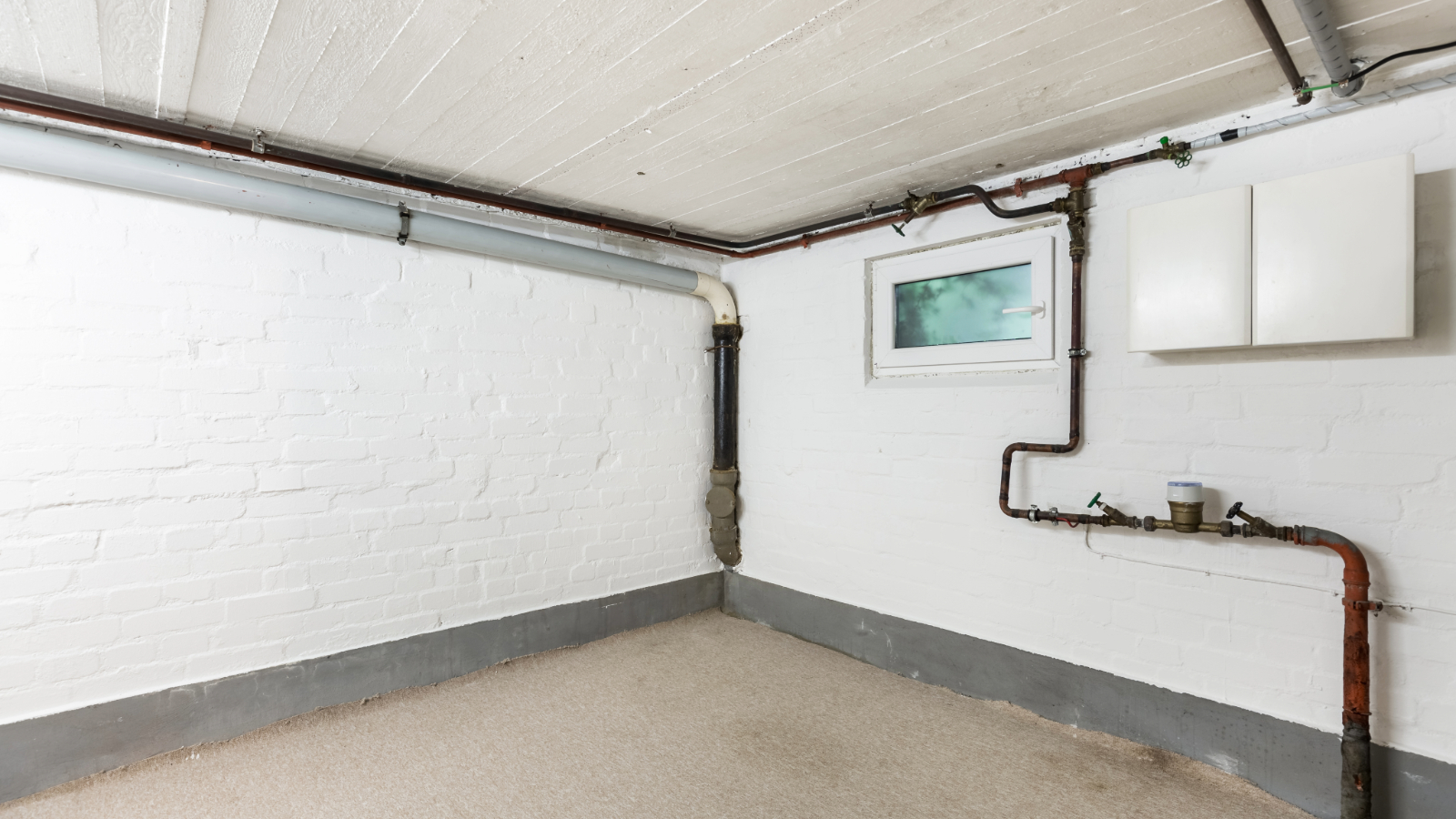Start painting patio slabs to give a fresh new look to your outdoor space
Get expert advice to give your patio a bold new look with these simple, professional patio painting tips
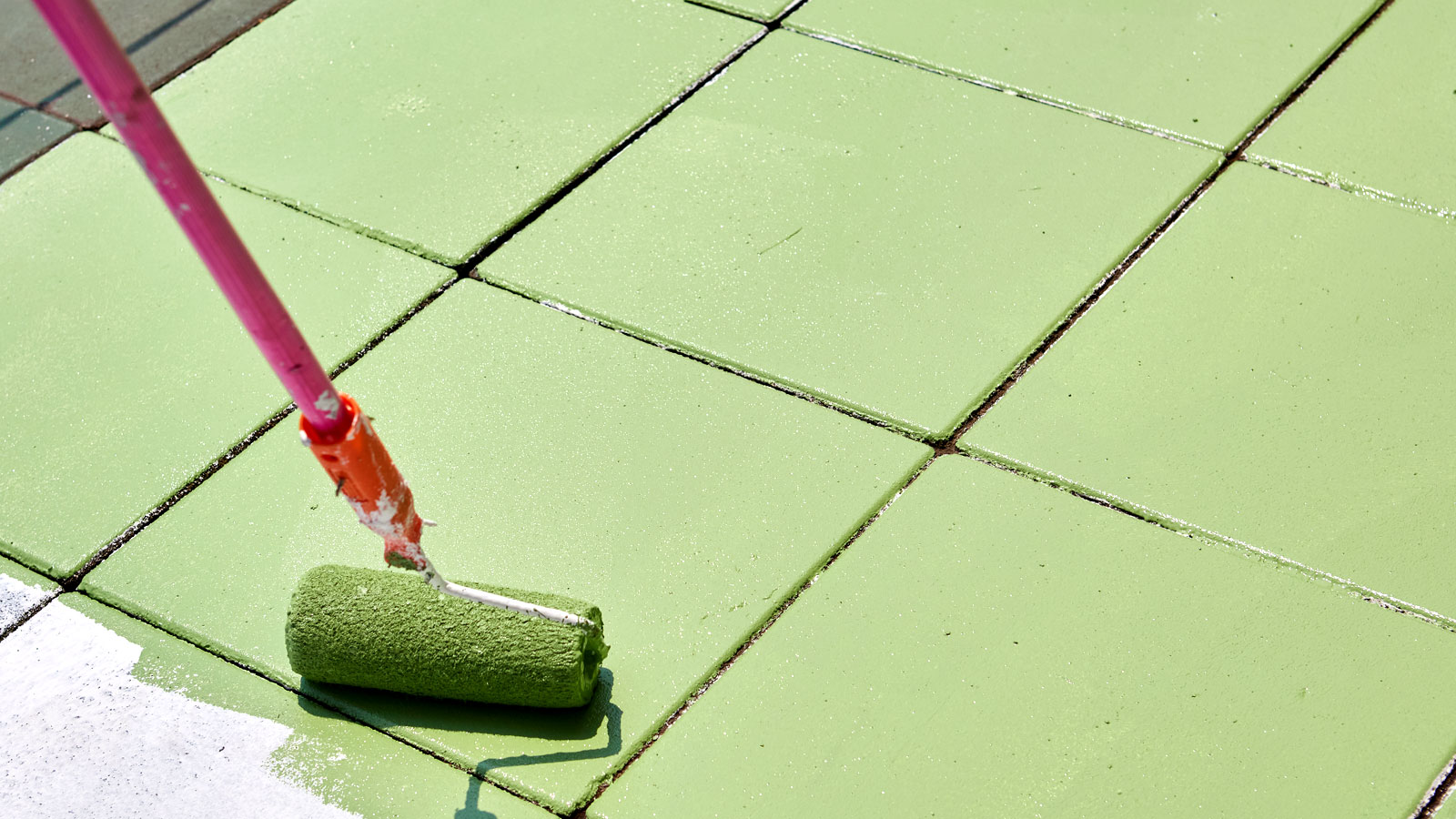
If you're fed up with looking at your tired old patio, painting your patio slabs is a quick and cost-effective way to achieve a smart new finish. In a matter of hours, it can transform an ugly eyesore into something to be admired and desired.
But you’ll need to follow the right steps to ensure that your patio design ideas become a lasting reality. In this guide, you’ll discover how to prepare your patio, pick the best paints, and apply the paint correctly to ensure that your patio stays looking good for longer.
Painting patio slabs – can you paint every type?
While you can paint most patio slabs, the first thing you need to consider is what material your slabs are made from.
Patio slabs are usually made from concrete, natural stone or brick. Although the materials may be similar in terms of their hardwearing appearance and finish, they may require different paint in order to get the best finish.
The most common slabs to find themselves in line for a revamp are concrete patio slabs. While they may be a practical and cost-effective option for budget-friendly patio ideas, they can soon lose their appeal. However, even if they lose their visual allure, they do have the redeeming quality of being one of the easiest slabs to paint.
Alternatively, if your patio is laid with natural stone, you may also find restoring it to its former glory is a more preferable option. A jet wash, using one of the best pressure washers, or a suitable patio cleaning solution may reveal shades and tones you'd forgotten and remove the need to cover them up with paint.
Likewise, if you've looked at porcelain paving pros and cons you'll know that the expense involved in both laying it and purchasing it makes painting them less of an appealing option. Instead keep on top of their maintenance and cleaning for a pristine and paint-free patio.
Bring your dream home to life with expert advice, how to guides and design inspiration. Sign up for our newsletter and get two free tickets to a Homebuilding & Renovating Show near you.
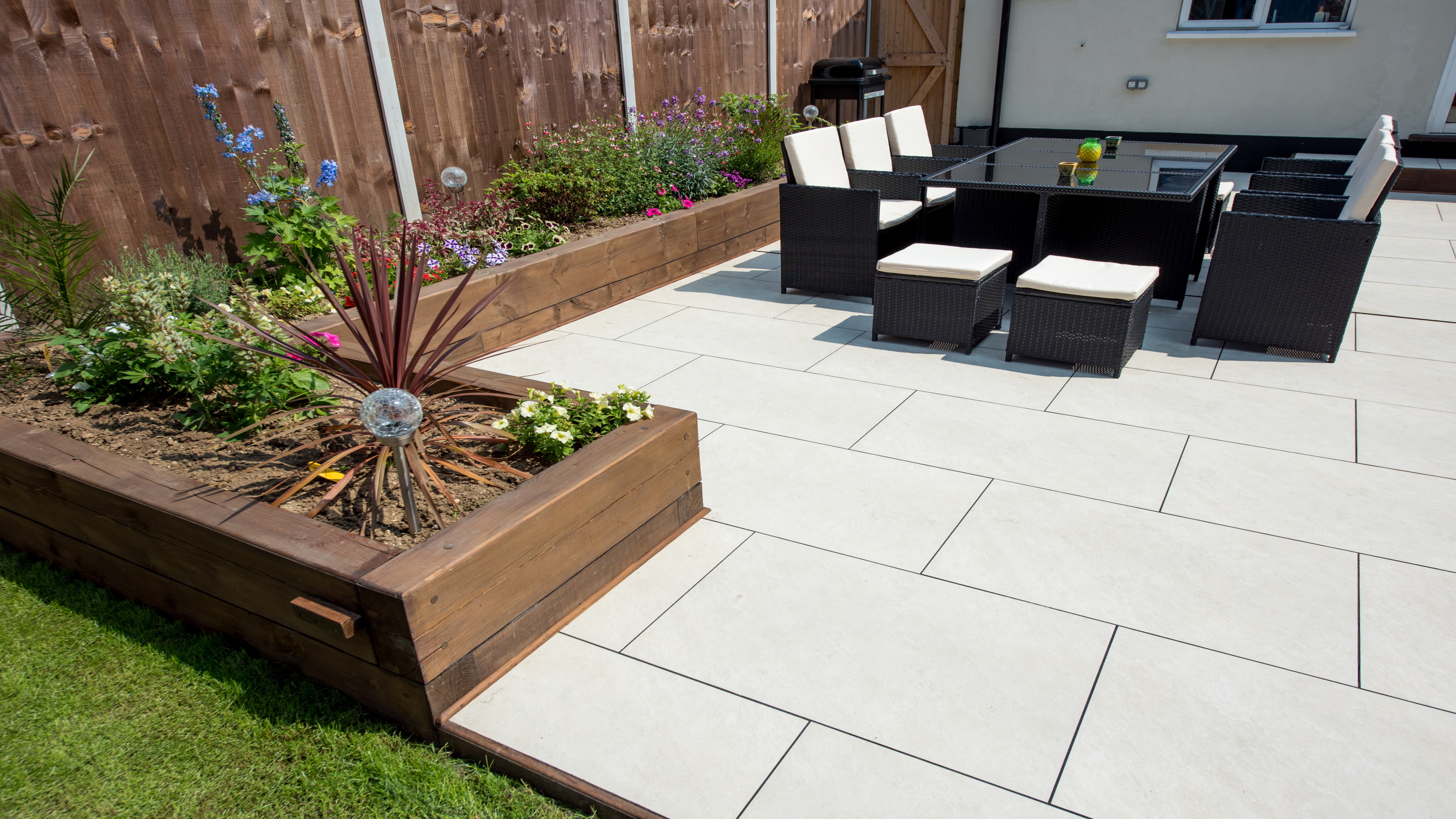
Try these tools for painting patio slabs

Peter Mortin is the Business Development Manager and resident garden guru at luxury outdoor rooms brand Crane Garden Buildings. Peter has worked in the horticultural industry for decades, having set up his own garden building company as a teenager.
Steps to paint to patio slabs
Before you start painting patio slabs, Peter Mortin, garden expert at Crane Garden Building offers some common sense advice. “When looking to paint patio slabs, the first thing to do is check the weather forecast." He adds, "If there’s any hint of rain or inclement weather, hold off on any paintwork as you’ll need dry and warm conditions to ensure the paint dries."
1. Clean the patio slabs
For a successful paint job, Mortin says, "The first port of call is to thoroughly clean the patio, to make sure there’s a good base to paint on." He adds, " Start with a stiff brush to remove any visible dirt, dust or debris."
Now, check the condition of your patio. "If your patio is reasonably grease and mould-free, now is the time to use a jet wash." He adds, "However, if there’s any buildup of grime, use a good-quality patio cleaner across all affected areas and then leave it to dry thoroughly."
Ensure you follow the manufacturer's instructions to verify its suitability for the patio slab material. Adhering to the proper guidance on how to clean patio slabs will also guarantee they are both grease and algae-free before you start.
2. Remove old paint
If your patio hasn’t been painted before, you can skip this step and proceed to the next one.
If it has, you'll want to remove as much of the old paint as possible. Start by brushing down with a stiff brush. To follow up, Mortin says, "A jet wash could be a good option for removing paint, but be careful that it doesn’t also remove pointing."
However, this might not work. If it doesn't, Mortin suggests, "A suitable paint stripper may be needed." He adds, "After this, wash down the patio with warm soapy water and a stiff brush."

3. Prep your patio slabs
First, check the weather forecast; you'll need a warm, rain-free day to paint. Clear away any nearby garden furniture and planters and mask off any areas you don’t want to get paint on with masking tape and dust sheets.
Then, check you have the right tools to hand. You don't want to start the job and then find you're missing an essential piece of kit.
4. Painting your patio slabs
You'll need two key tools to paint patio slabs, points out Mortin: "When painting, use a 9-inch roller (like this Harris Seriously Good Walls & Ceilings Twin Medium Pile Paint Roller Set from Amazon) if the slabs are smooth, or a large paintbrush if you need to get into any nooks and crannies."
Put the roller onto a broom handle or extension pole so you don’t have to bend a lot. Then, use a 4-inch brush to paint any areas the roller doesn't reach. If you have heavily textured slabs, also use a 4-inch brush to make sure you get into all the crevices.
Once you're ready to start, begin in one corner, usually the furthest away, and work backwards in sections. Apply a thin coat of primer – even if the paint you are using is self-priming – and leave to dry as per the manufacturer’s instructions.
Next, apply two thin layers of top coat, leaving them to dry between coats. Thin layers ensure a harder, longer-lasting finish. Then, leave them to dry and cure as instructed – usually 24-48 hours – before walking on the patio again. You could also apply a layer of sealant once dry for further protection.
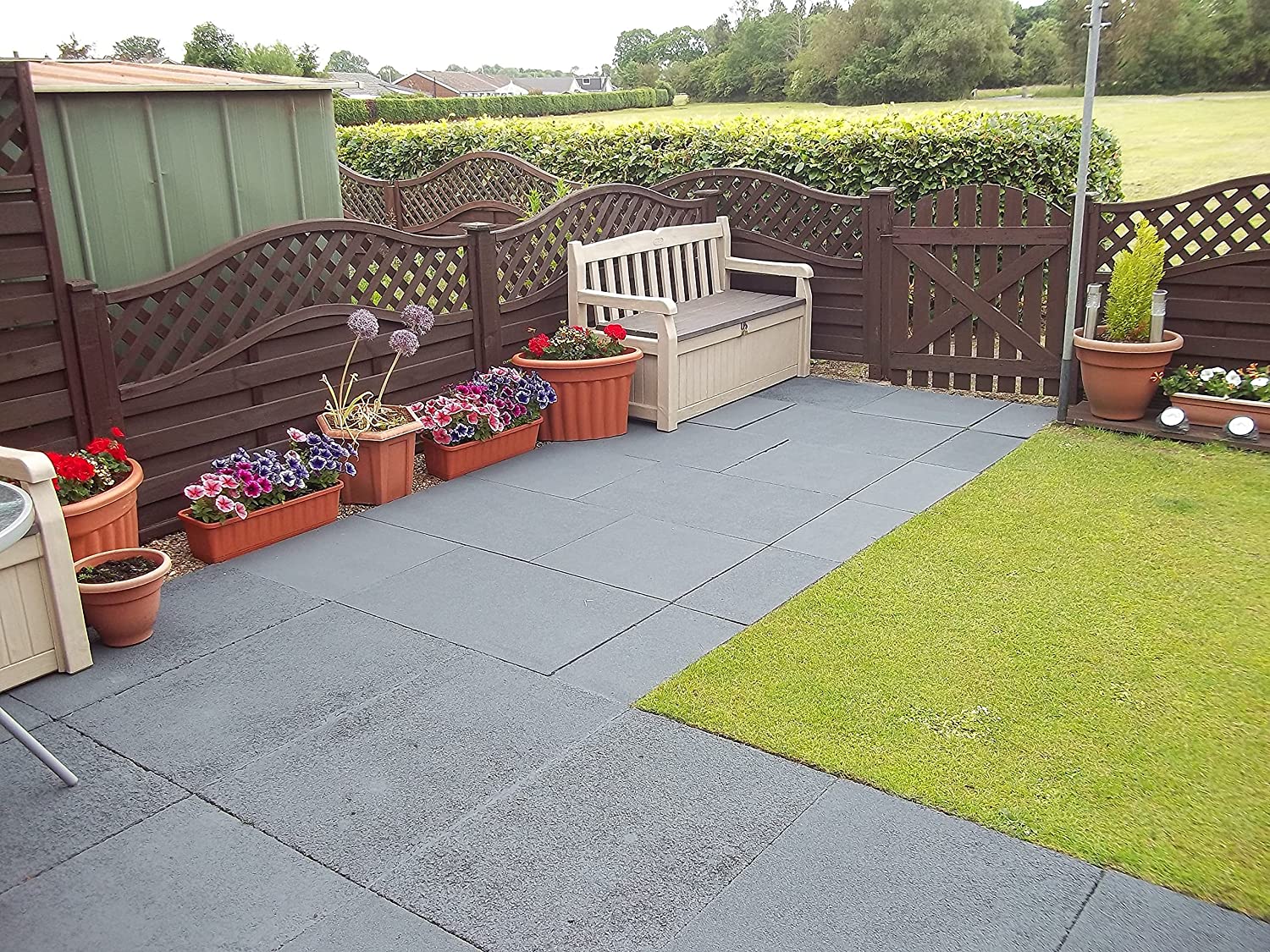
The best paints for painting patio slabs
Choosing the right paint when painting patio slabs is the key to that all-important pristine finish.
Masonry paint might initially seem like a good choice for concrete, stone, and brick, but it’s not hard-wearing enough for areas with a lot of footfall.
What you need is hardwearing specialist floor or concrete paint. Some come in a range of colours, so make sure you know the finished look you want before you start. This will help streamline the paint-buying process.
Try these paints for painting patio slabs
FAQs
How long should the paint last?
As a rule, you can expect between three and five years from a new patio paint job, but many factors will influence the lifespan of your painted patio.
How well you prep your patio before painting and what types of paint you use will make a big difference. A well-prepped patio with the right paint applied correctly could last another couple of years, while a poorly prepped patio using the wrong paint won’t last long at all.
The weather conditions where you live and how often the patio is used will again affect how long before a repaint is needed. An occasionally used patio in a warmer climate with average rainfall will last longer than a heavily used patio in a cold and rainy climate, for instance.
To get the most out of your painted patio, just make sure you prep well and use the right paint.
Are there any downsides to painting patio slabs?
If you want to give your patio a quick refresh, painting is definitely the most economical option. New patio costs can be expensive.
Painting patio slabs also gives you the option to change the colour of your patio when you feel like it. This is something you can’t do with an unpainted patio.
However, it's important to remember that a painted patio won't last as long as a well-laid and well-maintained patio, which can last for decades. It’s a balancing act between a short-term solution and a long-term fix, and only you can decide what's best for your outdoor space.
With a new-look patio, it's the perfect time to introduce some smart extras to enhance your outdoor experience. Check out our patio cover ideas, patio lighting ideas, and patio planting ideas for insight and inspiration.
Steve Jenkins is a freelance content creator with over two decades of experience working in digital and print and was previously the DIY content editor for Homebuilding & Renovating.
He is a keen DIYer with over 20 years of experience in transforming and renovating the many homes he has lived in. He specialises in painting and decorating, but has a wide range of skills gleaned from working in the building trade for around 10 years and spending time at night school learning how to plaster and plumb.
He has fitted kitchens, tiled bathrooms and kitchens, laid many floors, built partition walls, plastered walls, plumbed in bathrooms, worked on loft conversions and much more. And when he's not sure how to tackle a DIY project he has a wide network of friends – including plumbers, gas engineers, tilers, carpenters, painters and decorators, electricians and builders – in the trade to call upon.


